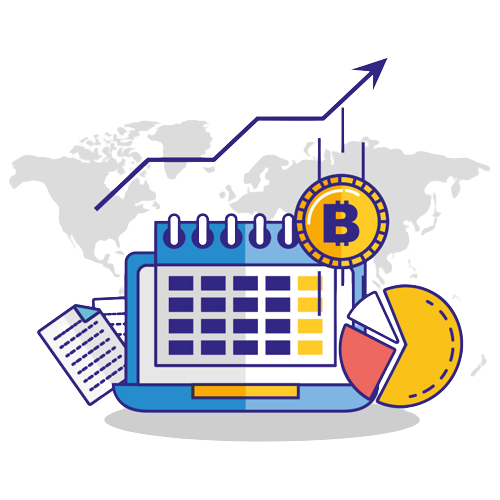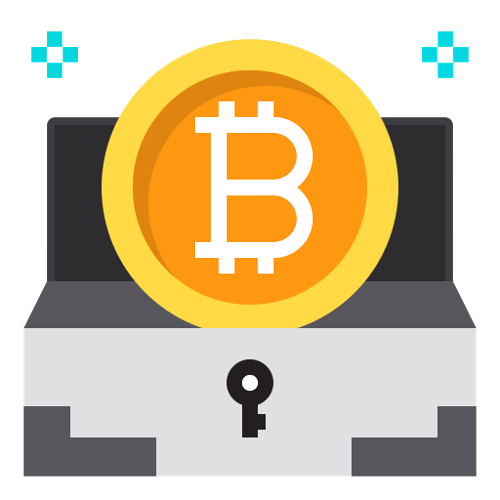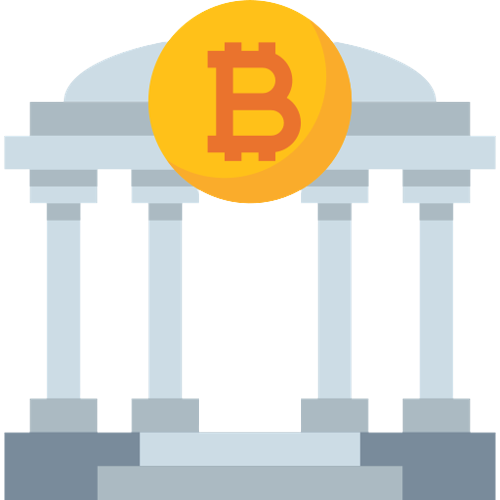
Non-fungible tokens (NFTs) have become one of the hottest topics in the crypto space in recent years. With record sales like Beeple’s $69 million NFT artwork grabbing headlines, interest in this new digital asset class continues to skyrocket.
But NFTs are more than just JPEG images and collectibles. They represent an entirely new economic system – an ecosystem with its own set of markets, participants, and value drivers.
In this comprehensive guide, we take a deep dive into explaining what comprises the emerging NFT ecosystem. We’ll explore all the key elements like NFT marketplaces, digital wallets, stakeholder roles, value creation levers, and more. By the end, you’ll have a solid grasp of the rapidly evolving world of NFTs.
Understanding NFTs
Before we look at the ecosystem, let’s build a quick foundation about NFTs themselves:
NFTs stand for non-fungible tokens, in contrast to cryptocurrencies like Bitcoin which are fungible.
Each NFT is unique and not interchangeable with another token.
They can digitally represent real-world items like art, music, videos, collectibles, virtual land, avatars, etc.
NFTs create digital scarcity even if the underlying work is abundant.
Ownership and authenticity are guaranteed by recording them on a blockchain like Ethereum.
Owners can buy, sell, and trade NFTs for cryptocurrencies in exclusive marketplaces.
NFTs are programmable with smart contracts to add unique properties, permissions, royalties, etc.
Now that we know what NFTs are at a basic level, let’s explore the key participants and components that comprise the broader NFT ecosystem.
NFT Marketplaces
NFT marketplaces are websites where people can mint, buy, sell, and auction non-fungible tokens. They are the main hubs of activity in the NFT space. Some major marketplaces include:
OpenSea – The largest NFT marketplace with the biggest collection and highest trading volumes.
Rarible – A community-owned marketplace known for digital art and collectibles. Allows creators to mint NFTs.
Foundation – A high-end marketplace with exclusive limited edition digital art drops.
SuperRare – Focused on tokenized artworks and has its crypto token RARE.
Nifty Gateway – A top destination for limited edition NFT drops by prominent artists and brands.
These platforms allow creators to monetize works, engage collectors, and gain a reputation. For buyers, they provide access to rare digital assets from talented artists around the world.
NFT Wallets
To purchase, store, and transact with NFTs, you need digital wallets that support ERC-721 and other token standards. Here are some top options:

MetaMask – A browser extension wallet that supports Ethereum-based NFTs. Has mobile app versions as well.
Coinbase Wallet – Supports main NFT standards and allows access to marketplaces like OpenSea.
Trust Wallet – A mobile wallet for Ethereum NFTs. Can also hold other crypto collectibles.
MyEtherWallet – A client-side wallet popular for storing NFTs purchased on platforms like Rarible and SuperRare.
Enjin Wallet – Stores and interacts with ERC-1155-based gaming NFTs and digital collectibles.
These provide secure storage for non-fungible tokens and quick access to leading NFT marketplaces and auctions. As the ecosystem expands, more niche wallets for specific niches will likely emerge.
Blockchain Networks
While Ethereum currently dominates NFT infrastructure with over 97% market share, newer networks are entering the space. Here are some key platforms:
Ethereum – The first and largest NFT ecosystem with tokens based on standards like ERC-721 and ERC-1155.
Flow – A developer-friendly blockchain designed for NFTs, crypto games, and digital assets.
WAX – A blockchain purpose-built for trading virtual items and NFTs. Has native DeFi integrations.
Tezos – An energy-efficient PoS network with minimal gas fees that supports NFT marketplaces and tokens.
BNB Chain (formerly Binance Smart Chain) – EVM-compatible chain with lower fees, NFT standards, and a rising ecosystem.
Cardano – After launching native token functionality, Cardano plans to enable NFT creation and support. These provide the underlying infrastructure based on secure distributed ledgers, smart contracts, consensus mechanisms, wallets, and standards that enable NFTs to function.
Stablecoins
Since most NFT purchases and sales are conducted in cryptocurrencies, stablecoins pegged to the US Dollar play an important role as well. They provide a less volatile medium of exchange compared to coins like Ether. Here are some top stablecoins used:
USDC – A regulated stablecoin backed by fully reserved assets. One of the most widely used in crypto.
DAI – A decentralized stablecoin built using collateralized positions and algorithms to maintain its 1:1 dollar peg.
BUSD – Binance exchange’s stablecoin approved by the New York Department of Financial Services.
USDT – One of the earliest stablecoins pegged to the US Dollar. It remains controversial but widely used.
These allow buyers to move funds easily between centralized exchanges and NFT marketplaces without exposing themselves to the volatility risks of non-stable cryptocurrencies.
Creators
The creative talents who create desirable NFTs are the lifeblood of this ecosystem. These include:
Digital artists – graphic designers, animators, meme-makers, etc. create unique digital artwork.
Musicians – independent artists and producers dropping audio NFTs of their songs.
Filmmakers – creators releasing limited NFTs of video content like documentaries and short films.
Celebrities – famous personalities from the arts and pop culture minting branded collectibles.
Influencers – popular bloggers, YouTubers, and social media stars creating their NFTs.
Gamers – game developers releasing in-game assets and cosmetics as unique tradeable NFTs.
The creativity of these talented individuals across artistic domains produces the sought-after digital goods that buyers covet.
Collectors
NFT collectors and investors form the demand side of the ecosystem. They include:
Art collectors – Patrons who appreciate digital artworks and artifacts as a new-age asset class.
Domain experts – Industry insiders who recognize value based on their knowledge of niche creative sectors.
Crypto influencers – Whales, VCs, and tastemakers who set NFT trends based on their endorsements.
Metaverse enthusiasts – Early adopters excited about digital spaces, virtual fashion, avatars, etc.
Tech futurists – Visionaries who see strategic value in emerging technologies and digital ownership.
Casual speculators – Mainstream investors hoping to flip hyped NFTs for a profit based on market trends.
Their shared appreciation for blockchain-certified digital ownership is what makes NFTs worth large sums that often shock outsiders.
Influencers
Influencers drive awareness and participate actively in shaping the NFT landscape:

Crypto thought leaders – Entrepreneurs, authors, and speakers championing NFTs at global forums.
Crypto media – Websites, podcasts, and YouTube channels extensively covering the NFT industry.
Crypto celebrities – Big tech figures and investors like Mark Cuban who advocate NFT adoption.
Meme accounts – Popular social media pages promoting trends like profile pic collections.
Whales – Users with deep pockets who mint or purchase attention-catching high-value NFTs.
By amplifying narratives and endorsing developments, they direct mainstream conversations and values around NFTs.
Developers
Developers are the technical backbone enabling a vibrant NFT infrastructure:
Smart contract coders – Creating ERC token standards for different NFT use cases.
DApp programmers – Building innovative Web3 applications around NFT functionality.
Game developers – Incorporating NFT architecture into virtual worlds and metaverse environments.
Wallet creators – Programming user-friendly interfaces for storing, sending, and displaying NFTs.
Marketplace builders – Developing NFT market websites and auction platforms.
Blockchain core developers – Maintaining blockchain networks optimized for NFT throughput.
Their efforts expand the possibilities of what can be created and achieved using programmable NFTs.
Value Creation Levers
Several key factors drive value in the NFT landscape:
Scarcity – Limited mint runs, exclusive memberships, and capped supplies sustain high valuations.
Social signaling – Owning prominent blue chip NFTs (like BAYC) signals status and belonging.
Creative quality – Artworks by top digital artists command premium pricing based on talent.
Branding – A strong brand identity via symbols, typography, and other design elements can raise value.
Utility – NFTs that offer experiences, rewards, access, or other benefits tend to get more traction.
Interoperability – Assets that work across multiple games and metaverses gain more versatility.
Speculation – The perception of rising value itself becomes a self-fulfilling prophecy.
Metaverse – Linking NFTs to virtual worlds and avatar use cases enhances appeal.
Loyalty – Impassioned user communities sustain interest in specific collections and brands.
Understanding these motivations provides insight into the narrative and technical factors that drive emergent value in the NFT space as it matures.
Use Cases
NFT use cases span arts, sports, gaming, metaverses, and more:
Digital art – Tokenized versions of illustrations, images, GIFs, music, and other media.
Collectibles – Branded items like cartoon characters, trading cards, and licensed merchandise.
Gaming assets – In-game cosmetic items, skins, characters, weapons, and other virtual goods.
Sports NFTs – Moments from games, video highlights, and trading cards of athletes and teams.
Metaverse – Virtual land plots, avatars, clothing, vehicles, and other goods in virtual worlds.
IP rights – Blockchain-backed patents, trademarks, copyrights and contracts.
Domain names – Crypto domains ending in .dao, .nft, .coin, etc.
Memes – Viral pop culture images and video clips.
Tickets & passes – Tokenized tickets for live experiences and backstage access.
The more utility NFTs offer, the more lucrative they tend to become as adoption spreads.
Challenges
While the NFT ecosystem holds promise, there are challenges to overcome:
Speculation – Concern that current hyped valuations are artificial bubbles driven by speculation.
UX barriers – Buying, storing, and transacting with NFTs can be cumbersome for new users.
Scams – Fake collections and phishing sites looking to exploit new users.
Volatility – The extreme fluctuations of crypto amplify risk for new adopters.
Interoperability – Assets often work only within closed environments and lack portability.
Environmental impact – The computational energy required by some NFT blockchains has drawn criticism.
Copyright issues – Concerns around unauthorized tokenization of existing intellectual property.
Data permanence – Risk of losing metadata if linking servers go down.
By acknowledging these challenges, the community can collaborate on solutions to improve usability, security, and sustainability.
Conclusion
What started with CryptoKitties has evolved into a booming ecosystem worth over $60 billion. But NFTs have to potential to transform more than just art and collectibles. At their core, they offer a new model of provable digital ownership that could redefine how value is created online.
However, like any new industry, the NFT space has risks and challenges alongside its meteoric growth. Speculation has led to periods of rapid boom and bust that make more risk-averse newcomers hesitant. Usability and security also remain barriers to mainstream adoption.
Once solutions mitigate these issues, NFTs have almost limitless applications in the evolving digital landscape. Everything from decentralized identities to smart contracts and tokenized securities could be incorporated under a robust NFT framework. Incubation among early adopters allows the technology and standards to mature before hitting an inflection point with the mainstream.
For those willing to embrace the risks and complexities, the NFT ecosystem offers an opportunity to help shape an emerging digital economy – one that is more open, transparent, and empowering to individuals than legacy models. It lets creators engage directly with supporters. And users can become stakeholders rather than just passive consumers.
With careful stewardship, NFTs may just fulfill their promise of unlocking new modes of digital value creation, ownership, and exchange on the blockchain. The foundations are already taking shape in the form of marketplaces, wallets, networks, and user communities exploring this novel economic system.